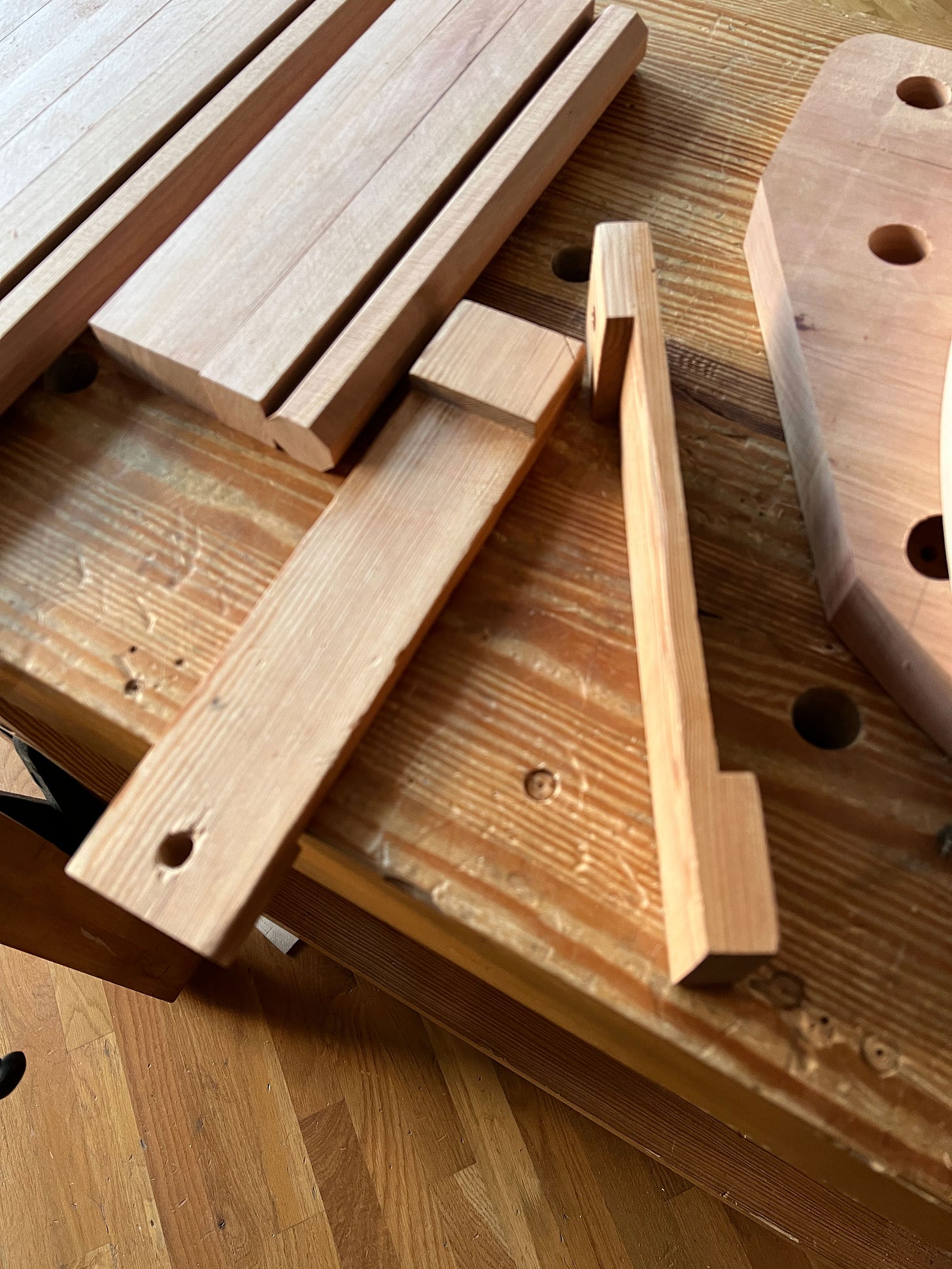I have long been of the opinion that the work of ‘fine’ joiners, who work with highly complicated joints, all hidden in the finished piece, leads to clean lines and continuous surfaces which make the finished work uninteresting. I am often tempted to ask these clever fellows “and what’s your next trick?”
— John Brown, “Welsh Stick Chairs” (Lost Art Press)

If I had to name an aspect of our craft that is nearly criminal, it wouldn’t be the sharpening shamans. I think their hearts are in the right place, but their heads are ensconced in their butts. And it’s not the tool manufacturers. For the most part, they make things that go back-and-forth or round-and-round. There isn’t much else a mechanical tool can do.
Instead, I reserve my disdain for the makers of commercial jigs. More than any other woodworking enterprise, the jig makers exploit the eager desire of beginners to do good work. And they promote their jigs as a shortcut to doing nice work.
The first offender was, of course, the router-powered dovetail jig. This mechanical wonder promises that you will make beautiful dovetail joints without having to learn to saw or chisel to a line. What they neglect to mention is that you are going to have to become a machinist who works to .001” and is willing to waste 20 scrap pieces to achieve one good joint.
I know this because I had to swallow this poison – and not by choice. I first learned to cut dovetails by hand. It wasn’t difficult. I learned during a couple days in a woodworking class in the early 1990s. (And during the next couple of classes I learned to make mortise-and-tenon joints with a saw, chisel and mallet. No big deal.)
But when I got a job at Popular Woodworking Magazine in 1996, I learned that making these joints by hand was a Very Big Deal. Woodworkers were afeared of these joints, and so the Commercial Jig Makers of America had come up with clever ways to get around the years and years of practice required (uh, actually only a couple weekends) to make airtight (actually, the joints work fine if they aren’t perfect) joints.
The Jig Makers sent us endless free boxes of aluminum and carbide for us to test and write about. On the one hand: Thanks! We need some tools to write about for our next issue of the magazine. But on the other hand: Quel Dommage! I have to spend a week learning how to set up and use this crazy contraption.
Keep reading with a 7-day free trial
Subscribe to The American Peasant to keep reading this post and get 7 days of free access to the full post archives.




